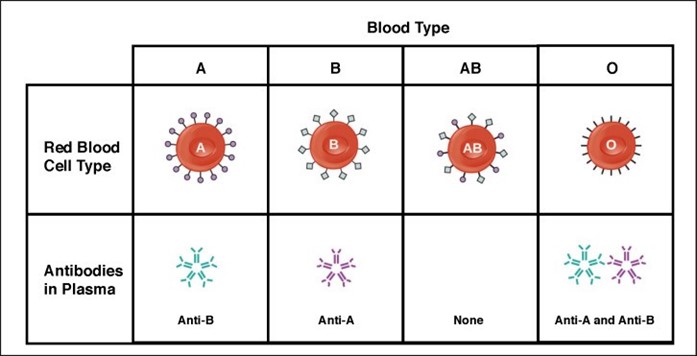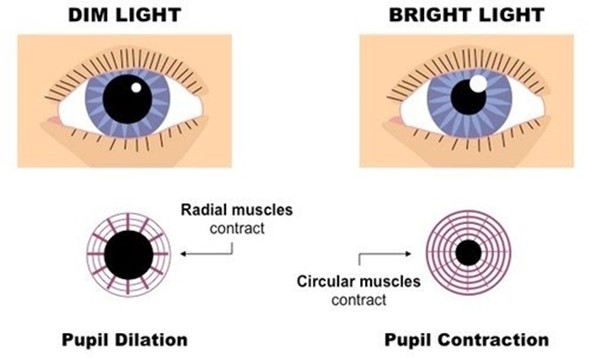A nurse is preparing to administer blood to a client. The unit of blood on hand is type B, and the client has type AB blood. Which of the following actions should the nurse take?
Contact the provider for further orders.
Notify the blood bank of the discrepancy.
Administer the blood as ordered.
Complete an incident report.
The Correct Answer is C
Choice A: Contacting the provider for further orders is not necessary, because the client has type AB blood, which is compatible with any other blood type. The client can receive type B blood without any adverse reactions.
Choice B: Notifying the blood bank of the discrepancy is not required, because there is no discrepancy. The blood bank sent the correct type of blood for the client, according to their blood type.
Choice C: Administering the blood as ordered is the correct action, because type B blood is compatible with type AB blood. The client will not have any transfusion reactions or complications from receiving this type of blood.
Choice D: Completing an incident report is not appropriate, because there is no incident. The nurse did not make any error or mistake in administering the blood to the client. There is no need to document or report anything unusual.

Nursing Test Bank
Naxlex Comprehensive Predictor Exams
Related Questions
Correct Answer is D
Explanation
Choice A: Eliciting the gag reflex is a way to assess cranial nerve IX (glossopharyngeal) and X (vagus), which are responsible for the sensation and motor function of the pharynx and larynx.
Choice B: Testing visual acuity is a way to assess cranial nerve II (optic), which is responsible for the sense of vision.
Choice C: Observing for facial symmetry is a way to assess cranial nerve VII (facial), which is responsible for the motor function of the facial muscles and the sensation of taste.
Choice D: Checking the pupillary response to light is a way to assess cranial nerve III (oculomotor), which is responsible for the motor function of most of the eye muscles, including those that control pupil size and lens shape.

Correct Answer is A
Explanation
Choice A: Evaluating chest expansion is the first action that the nurse should take, because it assesses the client's respiratory status and potential for pneumothorax, which is a life-threatening condition that can result from chest trauma. The nurse should compare the movement of both sides of the chest and listen for breath sounds.
Choice B: Checking pupillary response to light is an important action, but not the first one, because it assesses the client's neurological status and potential for brain injury. The nurse should observe the size, shape, and symmetry of the pupils and their reaction to light.
Choice C: Checking the client's response to questions about place and time is another important action, but not the first one, because it assesses the client's level of consciousness and orientation. The nurse should ask the client simple questions such as their name, date, and location.
Choice D: Assessing the capillary refill is a less important action, and not the first one, because it assesses the client's peripheral circulation and tissue perfusion. The nurse should press on the client's nail beds or fingertips and observe how quickly the color returns.
Whether you are a student looking to ace your exams or a practicing nurse seeking to enhance your expertise , our nursing education contents will empower you with the confidence and competence to make a difference in the lives of patients and become a respected leader in the healthcare field.
Visit Naxlex, invest in your future and unlock endless possibilities with our unparalleled nursing education contents today
Report Wrong Answer on the Current Question
Do you disagree with the answer? If yes, what is your expected answer? Explain.
Kindly be descriptive with the issue you are facing.
